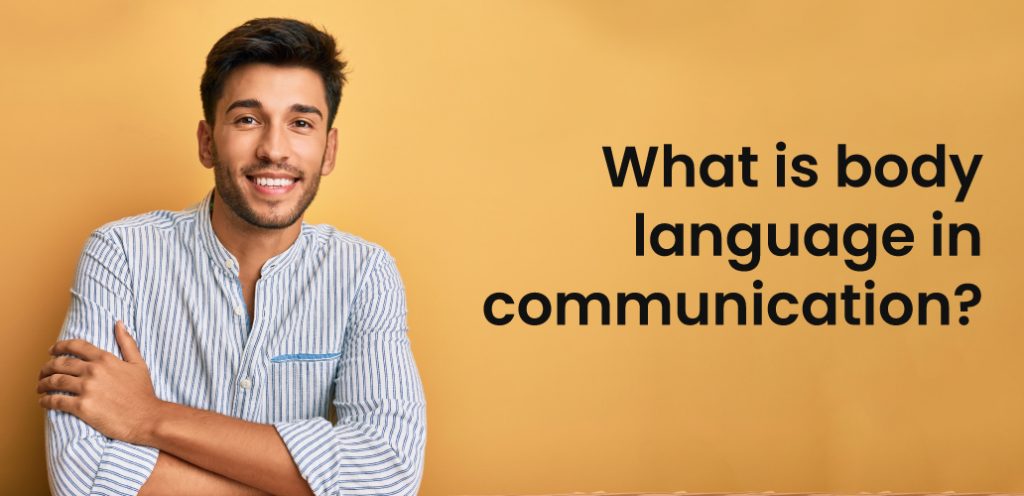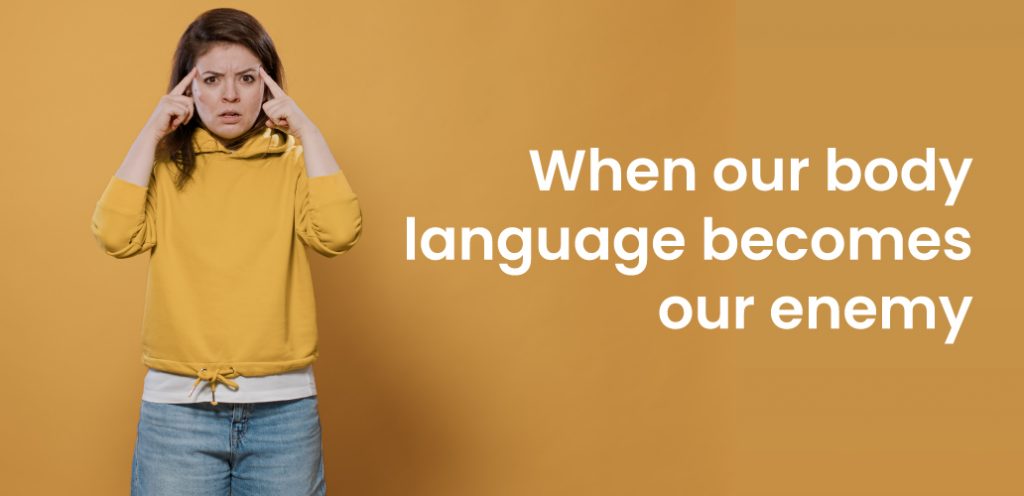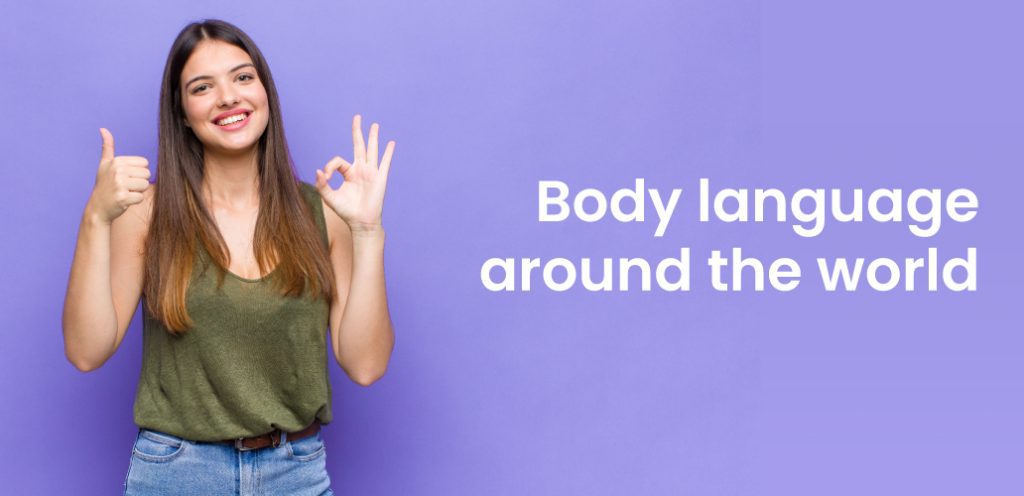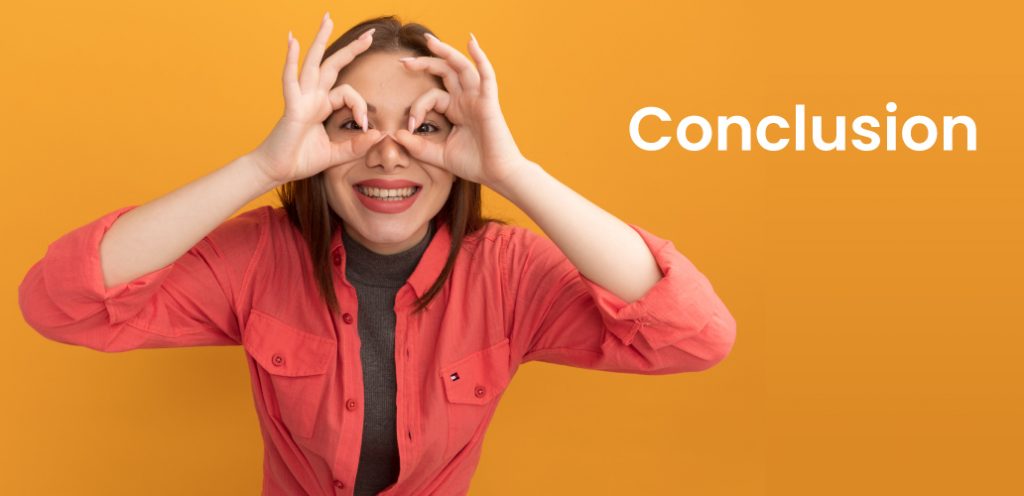Blog > Importance of Body Language in Communication
Importance of Body Language in Communication
October 6th, 2022

You know what really is a universal language, not just for humans but for animals too?
Body Language.
We've used body language since the dawn of time to effectively survive the wild. We might be in a concrete jungle now but the rules of effective communication remain the same. We are constantly judged based on our body language, so it's safe to say that positive body language is a very powerful tool that will get people to understand you and make a good impression on them. Especially when it comes to cracking those interviews, the effective use of body language can make all the difference.
But first let's explain body language, starting with the definition of body language.
What is body language in communication?

Bodies speak volumes about their owners and are oftentimes the key to discovering the other person's intentions, emotions and state of mind. Our bodies often perceive the opposite person's body language sub-consciously and react automatically. If someone is being increasingly aggressive towards us, we tend to assume a defensive stance without putting much conscious effort. This is because we are hardwired to feel threatened in such situations and our body feels a strong urge to protect itself.
On the other hand, if you're in the position of the aggressor, you will find your face flushed red - due the increase in heart rate, you will start to breathe more deeply to increase air intake, your fists will clench in anticipation of a fight and you will start to speak in a higher volume. These traits have been passed down to us through evolution. And all of these symptoms have a definite purpose in preparing our bodies for a fight. Although this much aggression is unlikely to occur in our workplaces (unless your boss is truly terrible or maybe you're the truly terrible boss 🙃).
These were just some of the examples of how we make use of body language in communication - you might recognise some of them as signs you've witnessed in yourself or in the people around you.
The role of body language in communication
Science has proven that more than tone of voice and choice of words, people pick up on our body language. Humans are hardwired to catch unspoken cues from the body language of the person opposite us. Just because the person opposite you is talking in a loud voice, you won't automatically take it as a threat, probably because their body language is telling you that they are being open and friendly.
Even if you aren't someone who is used to looking out for vital information in other people's body language, keep in mind that other people are looking at your body language all the time. Keeping a check on your body language will greatly improve your perception in other people's eyes - people including your future recruiters and managers (should you land the job).
For example, we all know confidence is the key to acing any interview. And while we are confident in what we speak, we often fail to appear confident overall - which doesn't bode too well with future recruiters who are used to keeping an eye out for leg bouncing, defensive and closed postures, guarded or nervous expressions, even clenched fists will alert them to any inconsistencies in our communication.
When our body language becomes our enemy

Effective body language is the key to successful communication, but sometimes over-communication is also a bad thing. We have to find a balance, so that we don't reveal too much. Here are some examples of what negative body language includes:
Boredom
- Unfocused vision or staring into space
- Tapping or drumming your fingers
- Doodling or writing random things
- Hand on cheek
Nervousness
- Leg bouncing
- Clenched fists
- Furrowed brow
- Closed or tight body language (hunched shoulders, arms crossed)
Agitation
- Clenched fists
- Raised eyebrows
- Flared nostrils
- Flushed cheeks
- Tense body language over all
Other negative body language signs
- Nail biting
- Rapid blinking
- Locked ankles
How to develop positive body language

Earlier we mentioned that a lot of our body language is subconscious and takes place without us noticing. But not all is lost. The only reason they go unnoticed is because we aren't used to controlling them. Once we become aware of what we are doing, we can immediately put a stop to it. That's not all. Apart from controlling our negative body gestures, we can consciously maintain a positive body language to reinforce feelings of trust, safety and interest in the other person.
Once you start gaining more self awareness, you can actually work on our positive body language skills in the long run. Positive body language is effective in reassuring the other person and making them feel secure enough to drop their guard and have an open conversation with you.
Here are some positive body language examples you can apply in specific situations:
Meeting someone for the first time
- Keep an open posture and avoid crossing your arms
- Give a firm handshake to greet the other person (don't crush the other person's hand though 😬)
- Maintain direct eye contact with the other person (with adequate breaks to not freak them out).
- Do not touch your face while answering any questions (you may come across as dishonest)
- If you're standing close, make sure to keep some personal space (don't be creepy).
- Most importantly, smile!
For Effective Public Speaking
- Maintain a confident posture (head held high, shoulders dropped, arms not crossed, overall open body)
- Use your hands gestures to communicate
- Keep your back straight and don't slouch (this will help you with voice modulation as well.)
- Look over at your audience when addressing them
Body language around the world

We live in a global community with opportunities in every part of the world. Moving out and starting over is hard enough but with the added layer of communication problems - life does not feel kind. If you're planning to ever apply for a job outside your home country, you have to be all the more mindful of your hand gestures.
Hand gestures are universally accepted as one of the key aspects of body language. They have been used for communication since the time of evolution, and are diverse as the number of cultures that have come into being. Positive gestures that signify one thing in your culture or your part of the world can mean something entirely different in other regions. In some cultures, bowing your head is considered the appropriate way to greet someone, opposed to the typical firm handshake followed in many western cultures.
It is important to know about the cultural impact certain hand gestures have in certain places. Using incorrect or sometimes inappropriate gestures can lead to misunderstandings or maybe lead the other person to even take offense.
Have a look at some of the craziest differences in hand gestures around the world.
- In Russia, it is customary to count numbers starting with your palm open, counting down with the pinky first. So the number 5 is represented with a closed fist.
- Peace signs have taken over the world. However, in the UK, there is only one acceptable way to make one, with the inside of your palm facing outwards. Holding two of your fingers up and showing the back of your hand is considered a very rude gesture.
- Doing a thumbs up in Iran is considered very offensive and most definitely won't convey the message of everything being alright.
And these were just the tip of the iceberg. There are millions of body language gestures around the world in different cultures. It is virtually impossible to know all of them beforehand. But taking some time to learn about these things could help you fit in easily, were you to ever travel to a different country or meet someone from a different cultural background.
Conclusion

Effective communication is composed of both verbal communication as well nonverbal communication. Nonverbal communication or body language takes into consideration facial expressions, posture, hand gestures, eye contact and much more, and these are just as vital (if not more) than what we have to say. With effective body language, we can avoid misunderstandings, create a positive impression and even make a lasting connection in our personal and professional lives.
All it needs is some practice and self-awareness 🤭
Hope you found these tips on positive body language useful. If you'd like us to cover more examples of body language in communication, let us know in the comments below.






Add a Comment